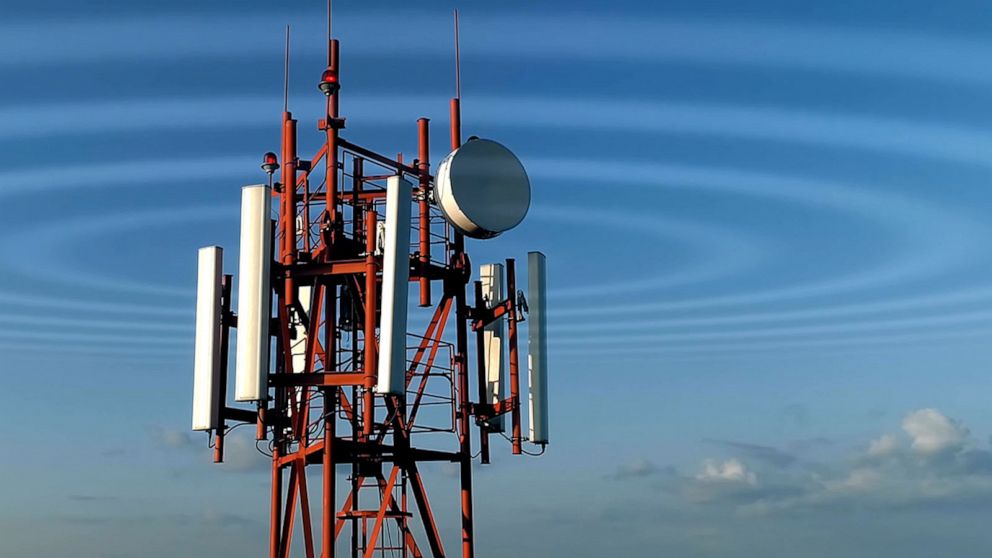If you've ever walked through a city and spotted tiny mini 5G cell towers placed on poles for street lighting. They look like little boxes however, they're actually transmitting wireless signals from cellular providers to your phone.
These smaller towers are replacing larger specially-designed cell towers. While they're not as noticeable, they still can cause problems for people.
The FCC's Radiation Exposure Thresholds
The FCC's Radiation Exposure Thresholds determine the safe distance that one can expose to electromagnetic radiation from wireless devices. The exposure limits are based on research that prove that electromagnetic energy could be harmful to health.
The absorption rate specific (SAR) is an indicator of the radiofrequency energy absorption by tissues. It's typically 1.6 milliwatts per kilogram averaged over one gram of tissue.
Since 5g is able to transmit at higher frequencies and has the potential to cause greater energy intensity on the skin and other directly-exposed body parts. what is a safe distance from a 5g cell tower can lead to various possible harms, like the appearance of skin conditions such as dermatitis and cataracts and skin cancer.
Due to the possible harmful effects of radiation from 5G, PSU has chosen to create a general power density limit of 4 mW/cm2 measured over 1 cm2, and not to exceed 30 minutes for the entire 5G spectrum at 3000 GHz. This localized limit is consistent with the peak SAR spatial-average of 1.6 W/kg averaged over 1 g of tissue at 6 GHz.
The FCC's Maximum Exposure Thresholds
If you've ever operated a cell phone, then you're aware that a safe range from the tower is at least 400 meters. This is because the power of transmission from cell towers increases drastically the further away your location from the tower.
Although this may sound like something that's good but the truth is that people who live close to towers could be more prone to health issues. For instance, a study conducted in 2014 in India found that residents who lived within 50 meters of cell towers experienced significant more health issues than those who were away from the antennas.
But, safe distance from cell tower found that people who moved to areas further away from cell towers noticed their symptoms return to normal within a couple of days. Studies have also demonstrated that exposure to extreme frequencies of radiofrequency electromagnetic fields (EMFs) could cause cancer, brain tumors as well as other health issues.
This is due to the fact that radiofrequency radiation, which is utilized in wireless communication, can penetrate the human body's outer layer of skin. It is vital to be aware of this since the skin functions as a shield against injury to the body, infection caused by pathogenic microorganisms and entry of toxic substances. It is also the biggest organ in the human body, and is accountable for maintaining the integrity of other organs.

The FCC's Minimum Exposure Thresholds for the Minimum Exposure
The FCC's Minimum Exposure Thresholds rely on a variety of assumptions that are not supported by scientific research. They include the false belief that exposures to RF radiation are safe due to minimal penetration into the body (i.e. the heating of tissues).
The assumption also ignores the greater penetration of ELF parts of modulated RF signals as well as the effects on the body of short bursts generated by RF waves that are pulsed. These theories are not compatible with current understanding of the biological effects of RF radiation. As such they should not be relied upon for health-protection exposure standards.
In addition, the ICNIRP and FCC restrict their maximum limit of exposure to the local SARs that are based on the peak frequency of absorption (psSAR) which is not a sufficient dosimetric tool to assess the amount of exposure to RF radiation. In safe distance from cell tower is inconclusive for frequencies above 6 GHz. In addition, psSAR is not been tested for RF radiation that is exposed to other environmental agents such like sunlight. The interactions of RF radiation with other environmental agents could produce synergistic or antagonistic effects. This could result in the risk of having adverse health adverse effects. For example, co-exposure to RF radiation and sunlight could raise the chance of skin cancer and exacerbate other skin diseases such as acne.
